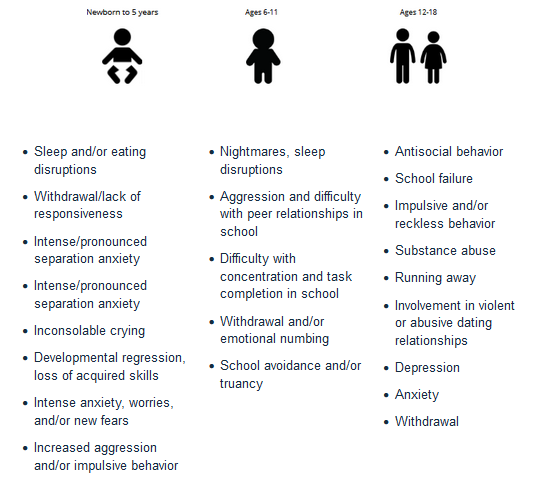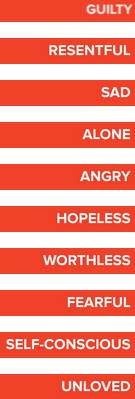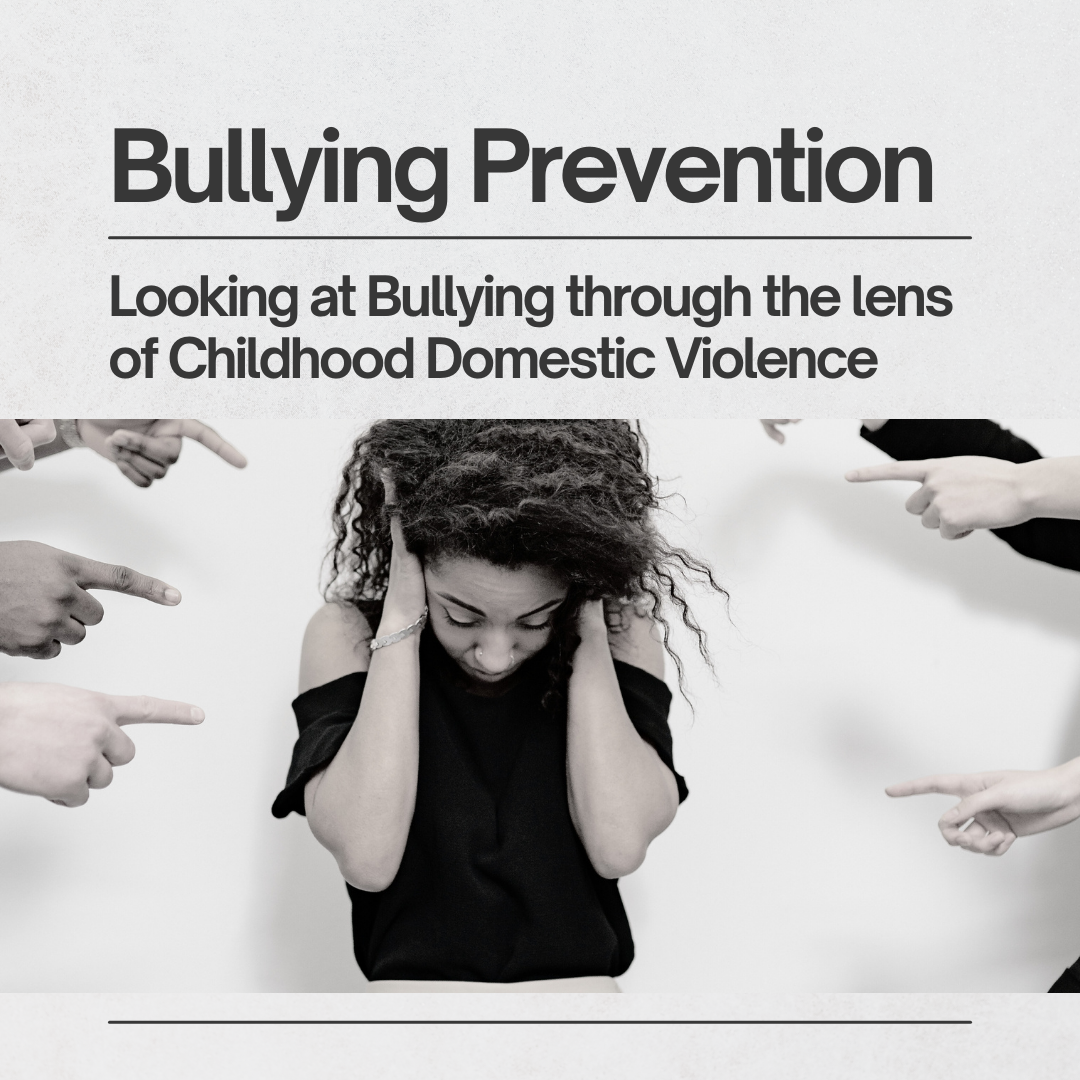This DV Awareness and Bullying Prevention month, we take a look at the major Adverse Childhood Experience (ACE) of CDV to connect and prevent all 3 issues.
Bullying is less studied than other childhood traumas. It is only in the past fifteen years or so that the awareness month has even existed. It is about 23 years now since the first fifty states passed anti-bullying legislation.
Though more recently, bullying has become a social issue that has shown to have far more negative influence in children. It alters their ability to grow up to be healthier and happier through the life span. Bullying has negative affects not only those that are bullied, but also the bullies themselves.
Finding the links of bullying to domestic violence (DV)
To help link bullying and domestic violence, it is helpful to have a baseline unique perspective to both social maladies. Focusing on Childhood Domestic Violence (CDV) digs deep into the adult perspective. Adults that grew up with domestic violence (DV). Focusing on CDV does not disregard children – the idea of viewing through the lens of CDV is viewing two generations at the same time.
Through understanding what CDV is, the aim of sharing this perspective is to have a two-fold prevention plan: help adults who have already faced CDV to enable discovery by learning about the potential source of their pain and giving it a name. This aids in providing a path to cope with their past and live a healthier and happier life going forward.
Secondly, by having more awareness of CDV, caring adults can use their knowledge to share its concepts and put them to practice for children. They can help the next generation that must live with the same fate of growing up with violence.
Two generations can have better coping systems to grow resilience. The chances of many children becoming bullies or being bullied that grow up with DV can be prevented further.
We’ll look at how and why understanding CDV can aid both DV and bullying.
What can bullying look like?
Being bullied is a form of childhood trauma – it can be relational aggression which can include teasing, ostracizing, meanness and cyberbullying (a form of stalking online). Physical aggression can take on more violent forms of bullying to include intimidating, threatening, stalking, and fighting.
Children’s bullying statistics indicate the issue is very prevalent amongst children that grow up with domestic violence. The statistics show that CDV has a direct link to increases in being a bully or being bullied:
- 34% of children engage in bullying
- 73% of children report being the victim of bullying
- 97% of bullies, say they themselves had been victims of bullying
Bullying may not always end in childhood. A study from the Harvard School of Public Health showed a link between DV and bullying. Out of 1,400 men aged 18 to 35 that visited community health centers in Boston, 38 percent admitted to recently abusing women. They also disclosed they had bullied other children in their youth. If we look at these statistics, children that bully have a higher risk of bullying as adults, with violent consequences.
What is the biggest influence for many children that become bullies?
Children that grow up with CDV are the same as any children that do not when it comes to who has influence in their lives. They see what their parents or caregivers do and typically mimic that behavior. Adults are typically the role models of children. Many of these children as they age think that violence is the way to handle stress, the way to handle relationships and the right way to do things. This behavior can lead children to follow suit when it comes to school peers and are at a greater risk of being bullies.
How does bullying link to domestic violence?
There is evidence that children exposed to violence, are more at risk of becoming bullies. Starting at a young age, these children seek power and control. Child bullies often feel that school is the only place they have either ability – they need to be heard and seek attention, though for misguided reasons. As these children become adults, the risk of an aggressive pattern will continue for them. As a result, they not only damage their own well-being but put future family members at risk.
Growing up with CDV does not only create bullies – it creates children that may be bullied. According to the UNICEF 2010 report, research shows that exposure to violence in the first years of childhood deprives children of as much as 10% of their potential intelligence. It leaves these children vulnerable to emotional, learning and behavior problems throughout childhood. This may include poor academic performance, addiction, reckless behavior, depression, and contemplation of suicide.
The Impact of CDV
Children in both groups, bullied or the bullies, are facing the same trauma at home that live with CDV. They may just react differently by either being the one seeking control, or the one that is controlled. But in either case, these children can be mislabeled according to UNICEF as being “bad”, “delinquent”, “troublemakers” or “lacking character and positive motivation”.
This infographic shows how youth are impacted by CDV and how it would impair their social and learning abilities in school:

Multiple Adverse Childhood Experiences (ACEs) increases the risk of being a bully or bullied
ACEs are traumatic events that occur in childhood. The impact of ACEs on a life can erode mental and physical well-being as a result of the toxic stress that a child has to grow up with from these experiences. Although bullying is not one of the 10 major ACEs that stems from early on ACE studies, it is ACE related – it is still trauma and any form of it that is lengthy and repetitive can compound the effects of a child already living with multiple ACEs.
A study of 100,000 students found that for every ACE a child experiences, they become more at risk in bullying, dating violence, substance abuse and thoughts and attempts of suicide.
The same applies to adults, especially if one of the multiple ACEs includes the major ACE of CDV. When you grow up with CDV, it is not only bullying that may still be a part of your life, but you can continue to be at risk of being one of these statistics:

The Lies of CDV are often similar for the bully or the bullied
CDV affects brain architecture for children’s developing belief systems. These are called the LIES of CDV (we will look at the corresponding TRUTHS of CDV later). This can start from birth and over time, will impair a person’s life in all areas: physical, mental, behavior and relationships. ACEs and the LIES of CDV are related. The more ACEs a child faces in addition to CDV, the more entrenched become these LIES in the brain.
And if a child then goes to school to face aggression of any kind from a bully, the level of toxic stress for this child increases and their belief system is even more falsified. These children on both sides, may be facing the same ACEs and they may think the same LIES.
 |
Look at the LIES of CDV. Does the bully and bullied have any LIES in common? Might that child that comes to school being the bully perhaps be bullied at home? Or see bullying between adults? Or that child being bullied, feel as helpless at home as in school?
Now look at some of the possible reasons a child may become a bully and those they tend to target, and you will see some parallels. |
Who are often the targets of bullies?
Bullies often target children that are different such as those in the LGBTQ+ or disabilities communities. They will also target any child that is perceived as weaker, and unable to stand up for themselves. They may target new students, as those children may not have friends just yet, and no social structure, or those that appear withdrawn, depressed, anxious, or appearing to have low self-esteem.
What are some of the reasons a child becomes a bully?
Below is a list of many reasons bullying exists:
- Low self-esteem
- Individuals were bullied themselves
- Bullying, aggression, or violence at home
- A lack of emotionally supportive parents at home
- Low parent involvement at home
- A lack of understanding of or control over one’s emotions
- Being excluded or stigmatized at school
- Attending a school that doesn’t address behavioral issues
There are many that stand out in terms of the LIES of CDV as well as who the bullies gravitate towards. There is a terrible irony that the bully and the bullied that are growing up with violence in their home may feel the same way about themselves and share the same pain but still be at odds.
Bullies like the bullied will feel hopeless, lack self-esteem, feel alone. The violence faced at home can cause both to even respond similarly in a school setting, the bullied showing anger at times. For a child to face trauma at home and face it at school is an incredible burden for a child. The levels of toxic stress give a child being bullied no time to recover, no time to stop the lies from bombarding their brain.
Prevention of bullying should start with understanding the TRUTHS of CDV
For every lie of CDV there is a corresponding TRUTH. How can this help aid in bullying prevention though?
| Learning this core concept of CDV, you can better understand what children are feeling about themselves. You will see the signs better that they are growing up with DV.
Understanding the impact of CDV, you can see the signs that children in different age groups exhibit. Learning that ACEs can compound many issues including bullying, this can also help address both children’s needs and target any risks they may also be facing. Knowing the TRUTHS of CDV, children can learn to rewire their brain with help through positive reinforcement. |
 |
Helping the Bullied
It can be challenging helping children who are bullied and facing DV. Many children who live with CDV, do not have a support system. There may be bullying at home or lack of nurturing and empathy from parents or caregivers. There will be times a child needs someone on the outside: a family member outside of the household, a friend’s parent, a teacher or guidance counselor, for example.
Here are some possible ways to prevent a child from being bullied, be it a parent, or someone else:
- Help kids work through being bullied
- Tell them how they can help themselves – tell bully ‘STOP’, use humor to diffuse, or know when to walk away when these don’t work
- Tell them when they need to ask for help, such as reporting the issue
- Practice safety- stay near larger groups whenever possible
- Encourage new habits or hobbies, encourage meeting new friends, any way that you can help a child build self-esteem and confidence, and avoid potential bullying scenarios
- Talk to these children. And LISTEN
- As a parent, if possible, even just 15 minutes a day gives assurance to a child that they can come to you for help
- Ask the child to talk about their being bullied: why do you think that other child is a bully? Is there a teacher you can go to for help? What will you do if it happens again?
- Help the child talk through their concerns and inform yourself better about the situation.
- See more questions about talking to a child here, and includes ways to approach the subject when the child is hesitant.
- BE A ROLE MODEL for a child – show them what a caring, responsible adult looks like by your example. For children that live with CDV, there is evidence that shows to build resilience in a child with facing the trauma of ACEs, there is no greater positive influence on a child’s life than being THE ONE:
- THE ONE is the idea that any caring adult can step into life of a child growing up with DV and provide even a little guidance, support and hope to help change a child’s life.
Helping the Bully
Bullies may be even less inclined to reach out for help than the bullied. They both face similar problems due to the LIES ingrained. Not only this, but a bully is polarizing – you want to address the bullied child’s needs and protect them. Leaving the bully to fend for themselves and continue bullying may a residual effect.
The viewpoint has to shift to address the bully as well, through the lens of CDV. The question for you to ask is if this bully is also growing up with domestic violence. Is this child hurting just like the one that is the target of this bully? In a school setting, punishment may seem like the best choice. This though ignores the trauma is causing them to bully in the first place.
Guidance is also needed for this child, like the one being bullied. You may need to ask some questions such as if they were the ones being bullied how would that make them feel? They wield power and control in the form of bullying but do require empathy when it is determined that the source of their bullying may be growing up with CDV.
Helping Adults
Having looked at the statistics it is important to know that the likelihood of DV increases for these adults as either the victim or the perpetrator that grew up with CDV. Many adults never addressed CDV. They may not know what it is. Nor they may not realize that not being the target still impacted them equally. The reality is CDV has the same impact on the brain for the child that was not the target.
The cycle of violence or of bullying could continue if their childhood trauma is not addressed for many of these adults. Just as there is victim or perpetrator odds with CDV increasing, so too it remains for bullying or being bullied. It can be hard for an adult to admit that what they went through as children still hurts them. Yet, it is this acknowledgement that it happened, and it isn’t their fault, is a critical step.
And we find that many adults never really understood the impact on their life. The rewiring of the brain is helpful to understand, even if later in life. Although a child’s brain is more elastic, it is never too late for adults to learn how to improve their potential. They too can break free of the aftermath of CDV. It is possible to gain closure, change the mindset, and focus on self-growth. And to know when to seek help from others. It is through the TRUTHS and LIES that this can happen.
————
Understanding the links between bullying/being bullied, DV and CDV is critical to help curb childhood traumas. This can ensure that there is not a new generation of children that will face their parents or caregiver’s fate. They will have the tools of knowledge to change their path.

